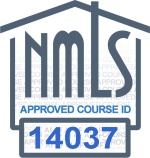WASHINGTON, D.C. (November 25, 2013) — Today, the Mortgage Bankers Association’s (MBA) Research Institute for Housing America (RIHA) released a new report entitled “A Profile of Housing and Health among Older Americans” authored by Professors Michael D. Eriksen of Texas Tech University, Gary V. Engelhardt of Syracuse University, and Nadia Greenhalgh-Stanley of Kent State University.
“The study found older Americans who own their homes are more financially secure and generally experience fewer impediments to good health than their peers who rent,” said Professor Eriksen. “Owning a home provides the single largest asset in most Americans’ retirement portfolios, while renters have far more difficulty modifying their living space to adapt to any of the myriad physical ailments that tend to affect older people. Our report serves as a useful reference for all parties interested in the implications of housing on an aging society, a situation America now faces with large numbers of the Baby Boomer generation rapidly heading into retirement age.”
This new RIHA report examines the housing and health status of older Americans roughly a decade after the Commission on Affordable Housing and Health Facility Needs for Seniors in the 21st Century released its report detailing the challenges facing all levels of government and society in ensuring support for housing and health needs as the population ages. This latest study provides a profile of the housing, functional status and health status of the near old (individuals aged 55 through 64) and older Americans (aged 65 and older) using the most recent data available from the Health and Retirement Study, a joint product spearheaded by the National Institute on Aging and the University of Michigan.
“Housing demand over the next decade will be significantly impacted by the aging of the U.S. population. Real estate finance must also evolve to meet these changing needs, whether older Americans age in place and continue to own their homes, or whether they rent,” said Mike Fratantoni, Executive Director of RIHA, and Vice President, Research and Policy Development for MBA.
The principal findings are as follows:
There were more than 47 million near old and older American households in 2010, of which 80 percent were homeowners.
- Housing is still the dominant asset in the portfolios of older Americans. Median housing equity for older American homeowners was $125,000; the median housing-equity-to-income ratio was 2.4:1; and 50 percent of the typical older homeowner’s portfolio was composed of housing wealth.
- 44 percent of older renters spend more than 30 percent of annual gross income on rent, which suggests that the availability of affordable rental housing is a concern for older Americans.
- Older renters have almost double the number of limitations in their ability to conduct daily activities relative to homeowners.
- 36 percent of older individuals have fallen in the last two years, and one-third of these have been seriously injured in a fall. The likelihood of falls occurring rises steeply as housing quality declines.
- 31 percent of older Americans have residences that have special safety features. 13 percent have modified their home to be either more accessible or safer between 2008 and 2010.
- Approximately half of those reporting a home modification between 2008 and 2010 (7 percent) had associated out-of-pocket expenses. The median out-of-pocket expenditure was $800; the mean expenditure was $2,260.
This report, along with other RIHA studies, can be found at www.housingamerica.org.


